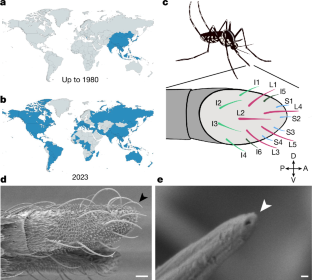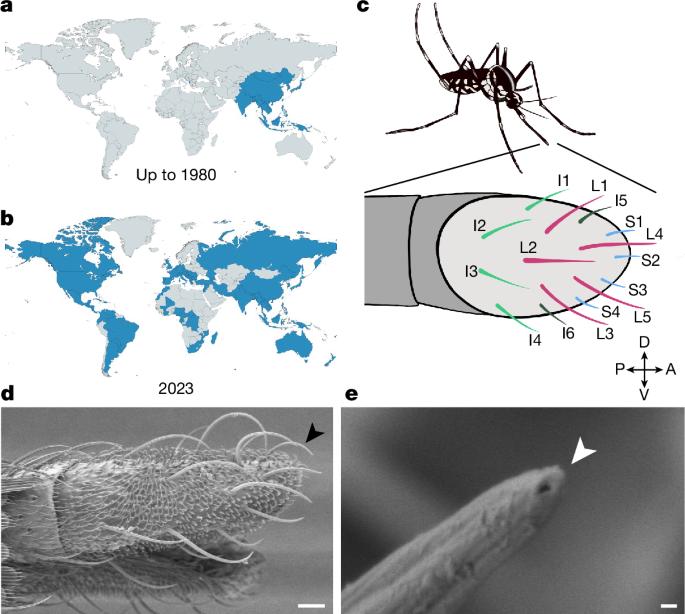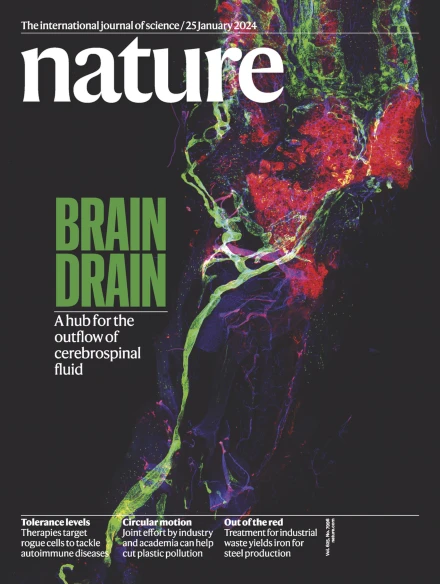Mosquito taste responses to human and floral cues guide biting and feeding
IF 50.5
1区 综合性期刊
Q1 MULTIDISCIPLINARY SCIENCES
引用次数: 0
Abstract
The taste system controls many insect behaviours, yet little is known about how tastants are encoded in mosquitoes or how they regulate critical behaviours. Here we examine how taste stimuli are encoded by Aedes albopictus mosquitoes—a highly invasive disease vector—and how these cues influence biting, feeding and egg laying. We find that neurons of the labellum, the major taste organ of the head, differentially encode a wide variety of human and other cues. We identify three functional classes of taste sensilla with an expansive coding capacity. In addition to excitatory responses, we identify prevalent inhibitory responses, which are predictive of biting behaviour. Certain bitter compounds suppress physiological and behavioural responses to sugar, suggesting their use as potent stop signals against appetitive cues. Complex cues, including human sweat, nectar and egg-laying site water, elicit distinct response profiles from the neuronal repertoire. We identify key tastants on human skin and in sweat that synergistically promote biting behaviours. Transcriptomic profiling identifies taste receptors that could be targeted to disrupt behaviours. Our study sheds light on key features of the taste system that suggest new ways of manipulating chemosensory function and controlling mosquito vectors. Taste neurons of the mosquito Aedes albopictus regulate biting, feeding and egg-laying behaviours by responding to taste cues in human sweat, nectar and egg-laying sites via excitation or inhibition.


蚊子对人类和花卉线索的味觉反应引导叮咬和取食
味觉系统控制着昆虫的许多行为,但人们对蚊子如何编码味素或味素如何调节关键行为却知之甚少。在这里,我们研究了白纹伊蚊--一种高度入侵性的病媒--如何编码味觉刺激,以及这些线索如何影响叮咬、进食和产卵。我们发现,头部主要味觉器官唇瓣的神经元对多种人类和其他线索进行了不同的编码。我们确定了具有广泛编码能力的三类味觉神经元。除了兴奋性反应外,我们还发现了普遍存在的抑制性反应,这些反应可预测咬人行为。某些苦味化合物抑制了对糖的生理和行为反应,这表明它们是对抗食欲线索的有效阻止信号。包括人体汗液、花蜜和产卵场水在内的复杂线索会从神经元的反应谱中引起不同的反应。我们确定了人类皮肤上和汗液中能协同促进咬人行为的关键味觉物质。转录组分析确定了味觉受体,这些受体可作为扰乱行为的靶标。我们的研究揭示了味觉系统的关键特征,为操纵化学感觉功能和控制蚊媒提供了新方法。
本文章由计算机程序翻译,如有差异,请以英文原文为准。
求助全文
约1分钟内获得全文
求助全文
来源期刊

Nature
综合性期刊-综合性期刊
CiteScore
90.00
自引率
1.20%
发文量
3652
审稿时长
3 months
期刊介绍:
Nature is a prestigious international journal that publishes peer-reviewed research in various scientific and technological fields. The selection of articles is based on criteria such as originality, importance, interdisciplinary relevance, timeliness, accessibility, elegance, and surprising conclusions. In addition to showcasing significant scientific advances, Nature delivers rapid, authoritative, insightful news, and interpretation of current and upcoming trends impacting science, scientists, and the broader public. The journal serves a dual purpose: firstly, to promptly share noteworthy scientific advances and foster discussions among scientists, and secondly, to ensure the swift dissemination of scientific results globally, emphasizing their significance for knowledge, culture, and daily life.
 求助内容:
求助内容: 应助结果提醒方式:
应助结果提醒方式:


